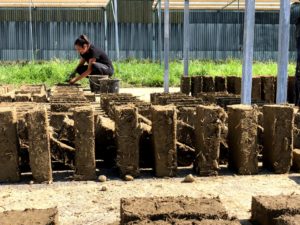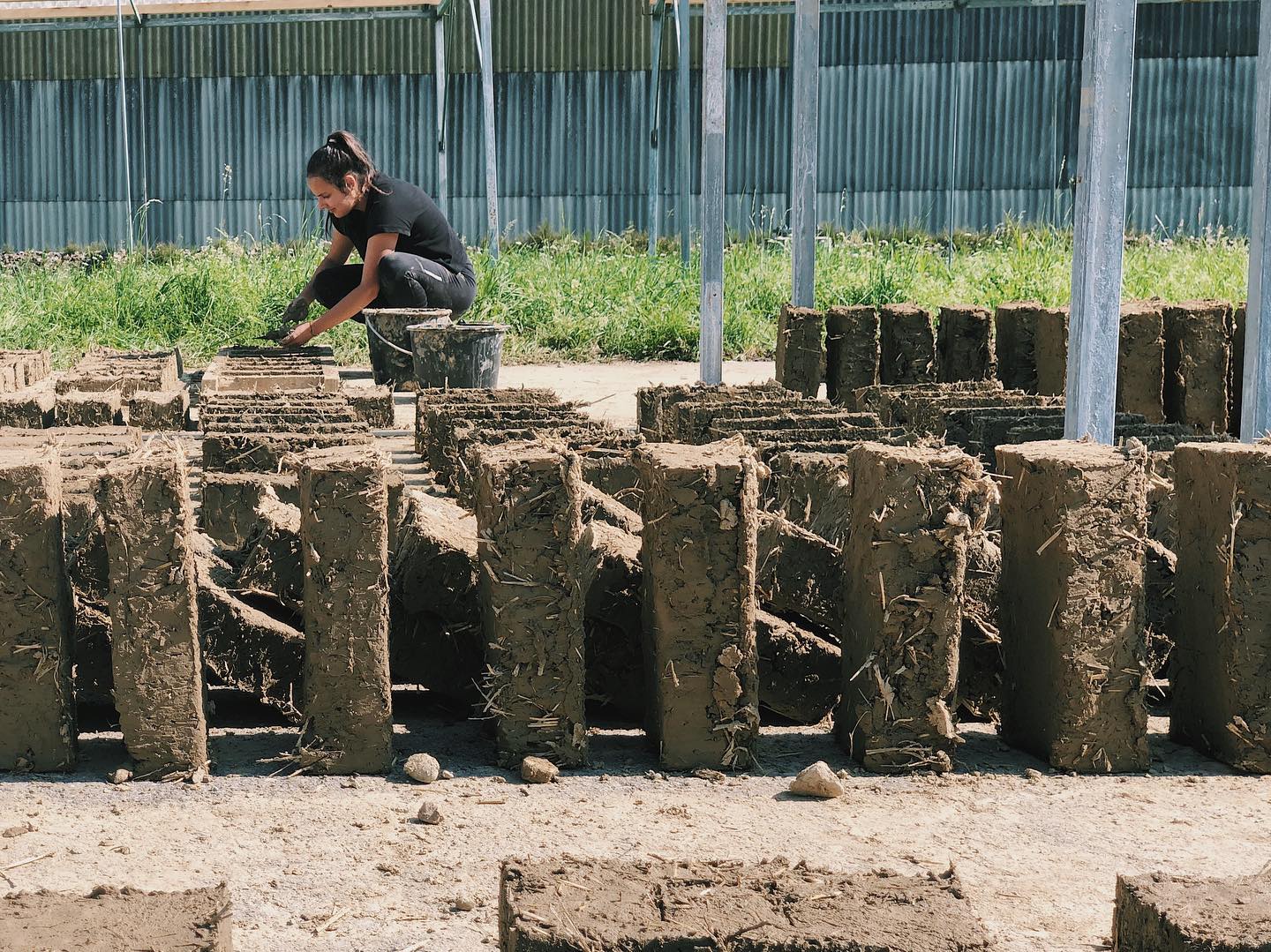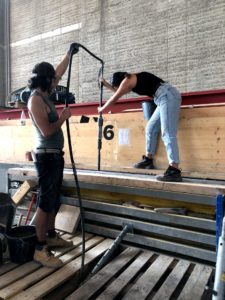As part of World Environment Day, we interviewed architect Bárbara Miranda to talk about sustainable architecture.
Bárbara Miranda, Portuguese, is an architect from the Faculty of Architecture of the University of Porto.
She is currently completing a postgraduate degree in Sustainable Architecture at the Kunstuniversität Linz and is an intern at Studio Anna Heringer, Germany.
She sees architecture as a powerful tool for changing the world.
She advocates architecture that is sustainable, fair and socially, economically and ecologically responsible.
We spoke to architect Bárbara Miranda in this interview about sustainable architecture where we challenged her to elaborate on the topic.
1. Bárbara works on the issue of sustainability in architecture.
Can you tell us a bit about that?
Sustainable architecture is, above all, a way of building without disrespecting the environment, architectural tradition, local communities and the economy.
It’s a much-needed topic these days, since buildings are responsible for 40% of energy consumption in the European Union.
They produce 36% of the greenhouse gases emitted.
There is an urgent need to talk about, develop and practice architecture that is the least harmful possible for everyone. 2. Is the architecture practiced today sustainable? The architecture most commonly practiced today is based on materials such as concrete, brick masonry, cement or various types of metal.
The major problem with these materials is that they initially abuse raw materials such as water or sand for their manufacture, which ends up destroying the ecosystems from which they are extracted.
Then there is the problem of production.
Manufacturing these materials requires a great deal of energy, which consequently leads to high carbon dioxide emissions into the atmosphere.
In addition, due to the standardization of building materials that are manufactured centrally in the respective factories, the transport of these materials is also responsible for numerous CO2 emissions.
Finally, it is also important to realize that the long-lasting “quality” of these materials ends up being environmentally damaging, since they degrade very slowly and destroy the environment in which they are used.
On the other hand, sustainable architecture, since it is based on local and natural building techniques and materials, allows for less transportation, less energy expenditure and less impact on ecosystems.
Therefore, when we look at traditional Portuguese architecture, made of earth, wood, fibers or stone, we can see that sustainable architecture is not a new concept after all, but one that is very present in our history. ![]()
3. What are the sustainability indicators in a project?
Do they refer to materials and/or processes?
Sustainability in a project can be applied to all parts of it.
Measures such as employing local artisans, paying workers fairly, using natural materials or respecting the traditional  typologies of a given area are also sustainable.
typologies of a given area are also sustainable.
Environmentally, both materials and processes can be indicators of sustainability.
Materials that are abundantly available in the construction area, such as earth, wood, fibers or stone, as well as construction techniques that favor human labor over the use of machines, make a project more sustainable.
On a more technological level, it is also possible to increase a building’s sustainability index by integrating the use of renewable energies into the building.
But to be sustainable, the use of technology is not at all mandatory.
For example, earth buildings, due to their thermal inertia, can drastically reduce the need for technological devices such as air conditioning or heaters.
4. Do you think that the use of natural stone in architecture can go hand in hand with sustainability?
That’s for sure.
However, this answer will always depend on the context in which it is applied.
In Portugal, we can witness the great presence of stone masonry such as granite or schist in architecture, especially in the north.
This demonstrates the good use of an abundant element in this area for architecture.
In the south of the country, we can also see the importance of stone in Portuguese architecture through the extensive use of lime.
Lime, which comes from limestone, makes the walls on which it is applied breathable, has antibacterial properties and also helps to reflect the sun’s rays, which prevents interior areas from overheating.
On a more general level, stone also has immense constructive advantages when it comes to foundations or structural systems.
All these ways of using stone show that to make architecture sustainable, we just need to look at the materials around us and use them in a way that has the least environmental impact and the greatest social and economic impact possible.
However, since stone is a non-renewable resource, its use must be considered.
5. In your opinion, are architects, engineers, construction companies and material suppliers aware of the need to preserve the environment and resources?
I would say that the younger professional generations are the most aware of the impact of architecture on the environment.
However, there is still a long way to go to make architecture more sustainable.
It’s mainly up to developed countries to recover traditional building techniques that in themselves already respond to climate, ecological and social problems and transform them into contemporary architecture that responds to the current problems of the 21st century.
It is experts like Anna Heringer and Martin Rauch who should inspire us to create healthy buildings for a healthier planet too. We would like to thank architect Bárbara Miranda for her participation in this Sustainable Architecture interview.




